
The value of site search analytics
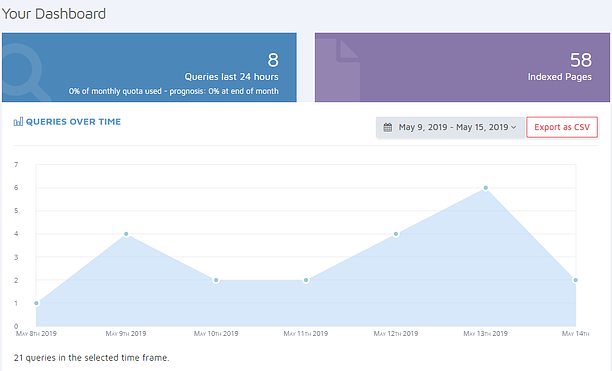
To understand the value of site search analytics, we first need to answer a more general question: why perform website analytics at all?
The benefits of website analytics
Put simply, most experts agree that website analytics are one of the most valuable insights into understanding user behavior and tracking website performance.
User data can be used to monitor trends, identify problems, and boost the quality of user experience (UX) on your site. In fact, data should be innately integrated with your website design methods to tweak important UX elements and squash snags in visitor journeys.
Additionally, analytics provide the extra helping hand to confirm whether your existing assumptions about user behavior are correct. Experts such as Robert Hetu, head research director at Gartner, highlight advanced analytics as one of the most crucial measures of discovering opportunities to improve business processes.
If you’re able to use analytics to identify the elements of your website design that have caused visitors to bounce, instantly address the issues, and consequently observe the success of your changes, then you’ll have a long-term system for website optimization and greater visibility of user behavior.
The importance of site search
![]()
For modern businesses, an effective website is essential to convert visitors who likely have many website options to choose from.
Obviously, a quick Google search for your products or content will mention your competitors too, so to improve the likelihood of visitors remaining on (and returning!) to your site, your website should be designed with product findability, visitor engagement, and user-friendliness in mind.
A powerful site search tool is one of the defining factors for achieving this.
Effective site search shortens user journeys towards finding what they need and reduces friction in UX, which then advances visitors towards their desired content or product.
For example, the Site Search 360 plugin allows users to easily navigate your website by instantly providing relevant results.

When users have a positive experience on your site and are able to find content or products in a few simple clicks, they’ll be more likely to return, resulting in greater customer loyalty and engagement.
Search as an analytics tool
Not only can effective site search streamline UX on your site, but it’s also a powerful analytics tool.
Studies show that 30% of visitors go straight to the search bar, so it's easy to see how search behavior can become a valuable peek into a visitor's mind.
Site search analytics empower you to gain insights into what's being searched on your site and how often these queries are made.
Similarly, you can gauge the popularity of certain search queries on your site and reveal the intricate search patterns of your typical visitor's behavior.
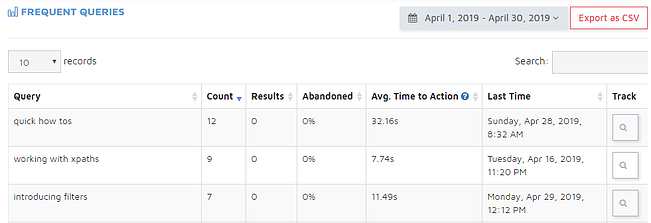
This data allows you to identify barriers in visitor search journeys on your site and fine-tune your site design to improve product findability and the likelihood of user conversions.
The value of site search analytics
The correct search tool can work wonders for website optimization processes and provide greater visibility of user behavior. But not all site search tools are built equally.
Webmasters should check that their current site search tool has the power to deliver enough in-depth metrics to monitor and learn from user behavior.
86% of businesses choose not to measure – or don't have the tools to measure – site search data, unwittingly giving those that do a key competitive advantage.
So, what are some of the insights that site search analytics can tell you about your users' search experience?
Click Through Rate
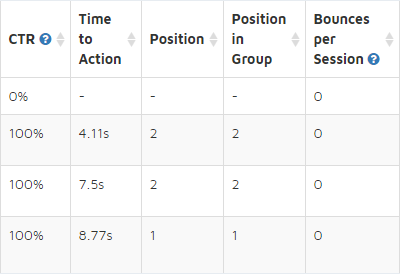
A powerful site search tool can measure the click through rate (CTR) of search results, as seen in the Site Search 360 dashboard above.
CTR statistics enable you to fine-tune your search tool by highlighting the search queries that visitors are less likely to click on by signposting them with low CTRs.
With this information, you can optimize the search results of certain queries to provide visitors with more relevant results, in turn improving UX.
Identify ‘Pogo Sticking’


Yes, you heard us correctly! Pogo sticking refers to the cycle that occurs when visitors click on a search result and return to the results page repeatedly – mimicking how users literally 'bounce' off unhelpful search results.
This indicates that the results aren’t what they’re looking for, and thus are poor-quality.
Site Search 360's analytics dashboard can detect this and shed light on which search queries return irrelevant results that may disjoint your users' search journeys – enabling you to take steps towards removing these issues.
Clicked-on Search Results

Site search analytics provide you with in-depth visibility of which exact search result was clicked on by your users for a certain search term.
This enables you to identify popular or unpopular products or content on your site. With this information, you can reorder or pin search results to improve product findability.
Search Quality Score
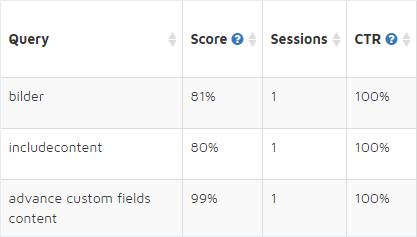
For many businesses, sifting through the analytics of search queries can be time-consuming.
Site search tools such as Site Search 360 provide an overall search quality score that’s assigned to each individual search query.
This provides a quantitative measure of how effective a search query is, enabling you to quickly pinpoint snags in your users’ search process, such as search term dead-ends.
Additionally, smart search analytics automatically suggest improvements that increase search quality score. In particular, Site Search 360 provides visibility of click distribution, which displays how many people click the first, second, or n-th entry in a search result list.
Frequently Used Search Terms
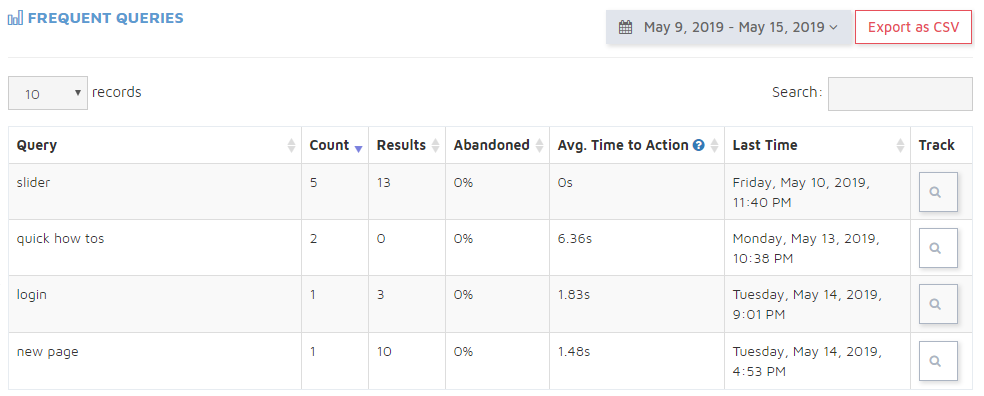
Search analytics can help you identify trending search terms, popular products/content on your site, and frequently used keywords or queries. This can be a great measure for promoting certain items or pages when you know what your visitors are searching for, and how often.
For instance, an e-commerce website might use frequently used search terms as a way of inferring what items to promote on their homepage.
Decision Time
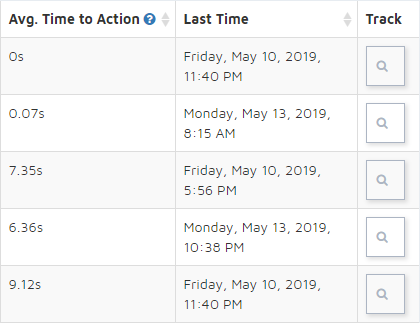
One of the most unique and in-depth aspects of site search analytics is the ability to view the length of time it takes users to click on a search result.
This lets you identify if results are too ambiguous or confusing – providing a crucial search result optimization opportunity.
Sessions with Search
Finally, site search analytics provide greater visibility of how many visitors use the search tool, where these visitors go next, and the traffic flow of your website.
Using this feature, you can identify problems in your visitors' search pathways, such as low usage of your search bar, or aspects of the search process that may be causing users to bounce off your site.
For example, if you've identified that only 10% of your visitors use search, you can change the UI design elements of the search bar to improve visitor usage, such as changing the position on your site, or changing the text button to an icon.
Get a site search tool with actionable analytics
Without the insights gathered from analytics, poor UX elements can go unnoticed and affect your overall conversion rate - highlighting the importance of monitoring user behavior through your on-site search.
It's clear that site search analytics are a website optimization opportunity not to be missed. Visibility of your users' search behavior can provide accurate insights into what your visitors are searching for, how often, and trending products or content of your website.
If you'd like to experience the benefits of heightened visibility for yourself, get an easy-to-deploy free trial of Site Search 360's most powerful site search plugin.
Want to find out more about the benefits of adding site search to your website? Check out our free guide to custom search engines for websites.
